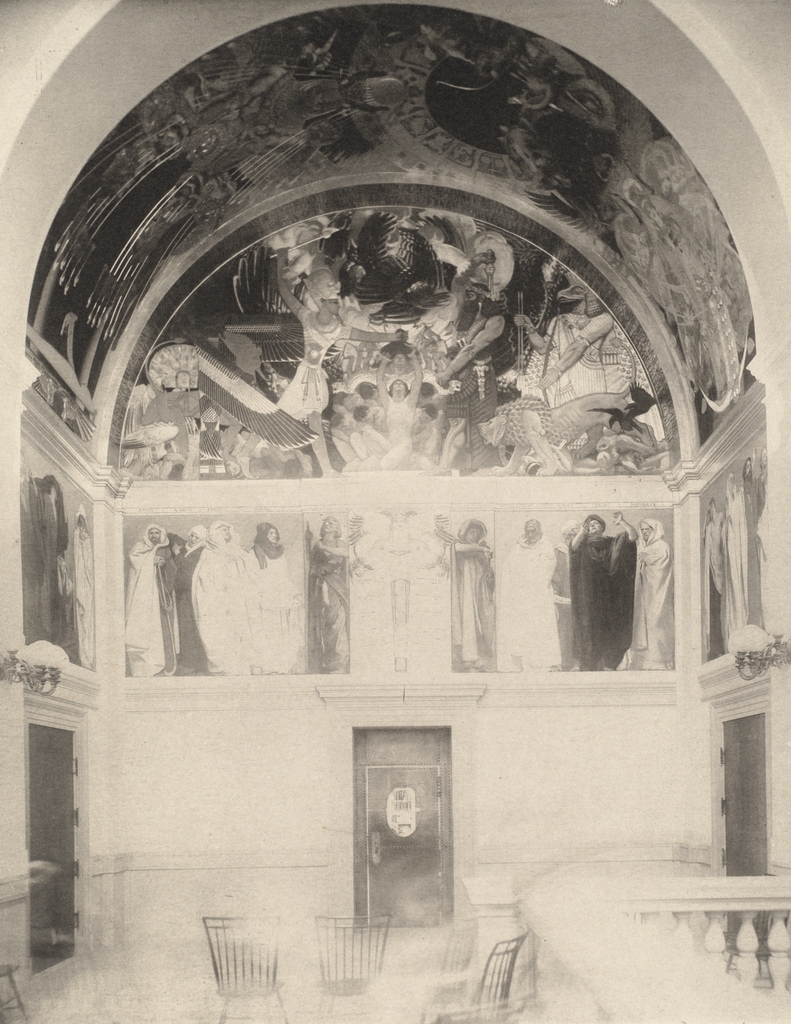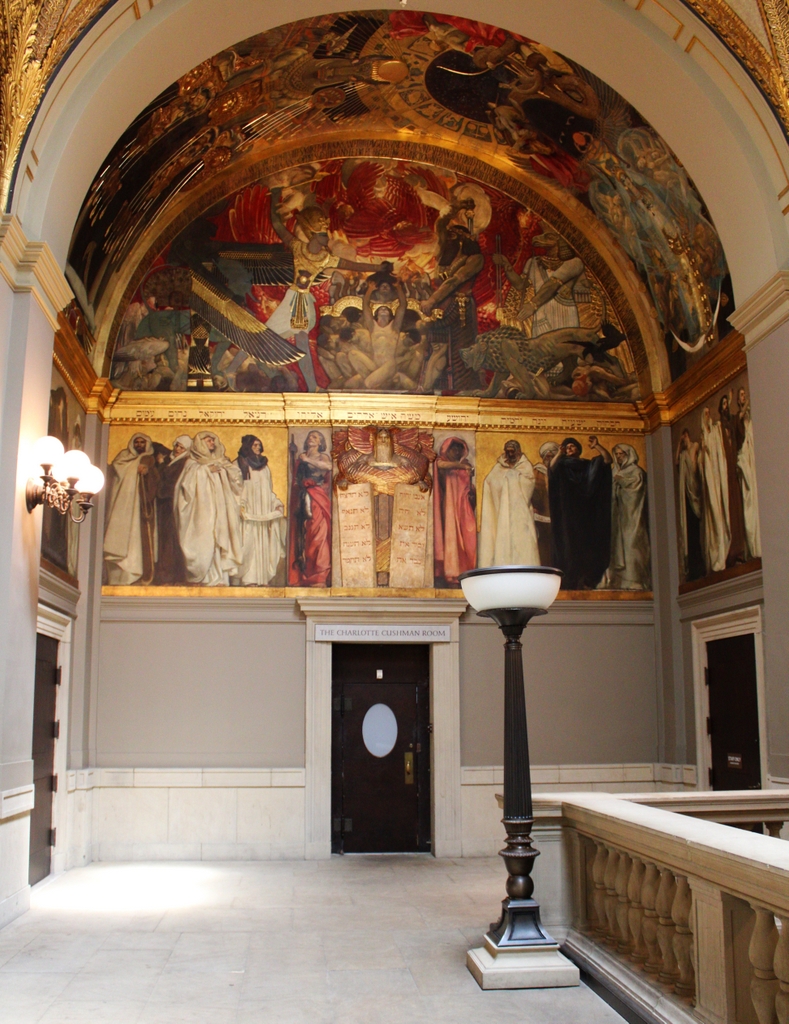A view of the murals in the Sargent Gallery on the third floor of the Boston Public Library’s McKim Building, around 1896. Image courtesy of the Boston Public Library.
The scene in 2021:
This building serves as the main branch of the Boston Public Library, and it is also an important architectural and artistic landmark, both on the exterior and interior. The building itself was designed by Charles Follen McKim, a prominent architect of the firm of McKim, Mead & White, but he also worked with a number of other leading artists of the period. Sculptor Augustus Saint-Gaudens carved the seals above the main entrance, and his brother Louis carved two lions at the base of the grand staircase. Other sculptural works included the bronze statue Bacchante and Infant Faun, by Frederick William MacMonnies, which originally stood in the courtyard before being moved to the Metropolitan Museum of Art in New York. In addition, the interior includes murals by three major artists: Pierre Puvis de Chavannes in the grand staircase, Edwin Austin Abbey in the book delivery room, and John Singer Sargent, here on the third floor.
Sargent was born in Italy in 1856, but his parents were originally from Massachusetts. He studied at the École des Beaux-Arts in Paris, and by the late 19th century he had become one of the leading portrait painters of the Gilded Age. For this mural at the Boston Public Library, McKim gave him discretion over the theme, and Sargent chose Triumph of Religion, with images that focused on the history of Christianity and Judaism, along with other ancient Near East religions. This became a long-term project, with sections of the mural being installed in four different stages between 1895 and 1916.
The mural panels in this scene, located on the northern end of the gallery, were part of the original 1896 installation, and the first photo was taken the following year. The panel on the ceiling is titled Pagan Gods, and it features the goddess Astarte on the right side, and the god Moloch on the left. Beneath them, on the top of the north wall, is Israelites Oppressed, which depicts the Israelites being attacked by an Egyptian pharaoh on the left and an Assyrian king on the right. This represents the enslavement of the Israelites by the Egyptians, along with the conquest and forced exile of the Israelites by the Assyrian empire. The last three panels, which are located directly above the doors, feature various Old Testament prophets. From left to right, the panel on the left depicts Zephaniah, Joel, Obadiah, and Hosea; the panel on right depicts Micah, Haggai, Malachi, and Zechariah; and the central panel depicts Amos, Nahum, Ezekiel, Daniel, Elijah, Moses, Joshua, Jeremiah, Jonah, Isaiah, and Habakkuk.
The rest of the panels are not visible in this view of the gallery, but they were installed in 1903, 1916, and 1919. The final panel in the project was never completed because of Sargent’s death in 1926, and that space on the wall in the gallery remains blank. Overall, this particular view here at the north end of the gallery has changed very little since the first photo was taken over 125 years ago. The mural was extensively restored in 2003 and 2004, and this space is now known as the Sargent Gallery, in honor of the artist.


